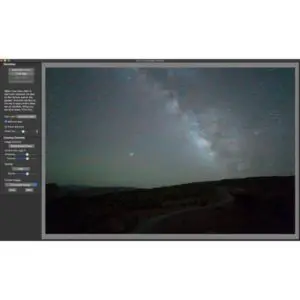

If any images are of inferior quality, re-load the other images, leaving those images out. At the top of the image panel there is a Frames slider button by scrolling backwards and forwards you can review each loaded image to check it for quality. Move this to the left to make the image look smaller to fit the window (this doesn’t affect the image). If the image cannot be viewed properly, there is a ‘Zoom’ slider towards the top left of the image panel. One of the images will now be visible within the image window. Our example uses images taken during the partial lunar eclipse on 10 January 2020. Select all the images and click ‘Open’ (see image above). At the bottom of the window, use the drop-down menu to select images.
BEST IMAGE STACKING SOFTWARE SOFTWARE
Once the software is running, click the 1) Open button in the control panel and then browse to the folder that contains the images that need stacking.

The program opens in two separate windows: one contains the control panel, the other the image panel. Open the AutoStakkert! software and check that the latest version is installed, which can handle stacking DSLR images. Select your images of the Moon to be stacked in AutoStakkert! Credit: Dave Eagle We also recommend that you avoid stacking high-resolution JPEGs, as these are compressed and will not produce the best final images. If your camera takes RAW images, you will need to convert them to TIFF or PNG files before stacking, as AutoStakkert! cannot stack RAW images. Once you are happy with the captured image, take several identical images, one after another. Adjust the exposure settings to ensure that the histogram peak is near or just left of centre.
BEST IMAGE STACKING SOFTWARE ISO
To begin, use the lowest ISO setting your camera has, such as ISO 100, to take an image of the Moon. Noise, on the other hand, being random in each image, becomes less noticeable.īelow we’ll look at how the stacking process can be performed on a lunar image with the freeware AutoStakkert! This process involves stacking several images to produce a combined one.Īs more images are stacked, the signal is enhanced and stands out more. Credit: Dave Eagleįortunately, there are ways to reduce the amount of noise present so that the image looks cleaner and sharper. A comparison of an image of the Moon before and after stacking.


 0 kommentar(er)
0 kommentar(er)
